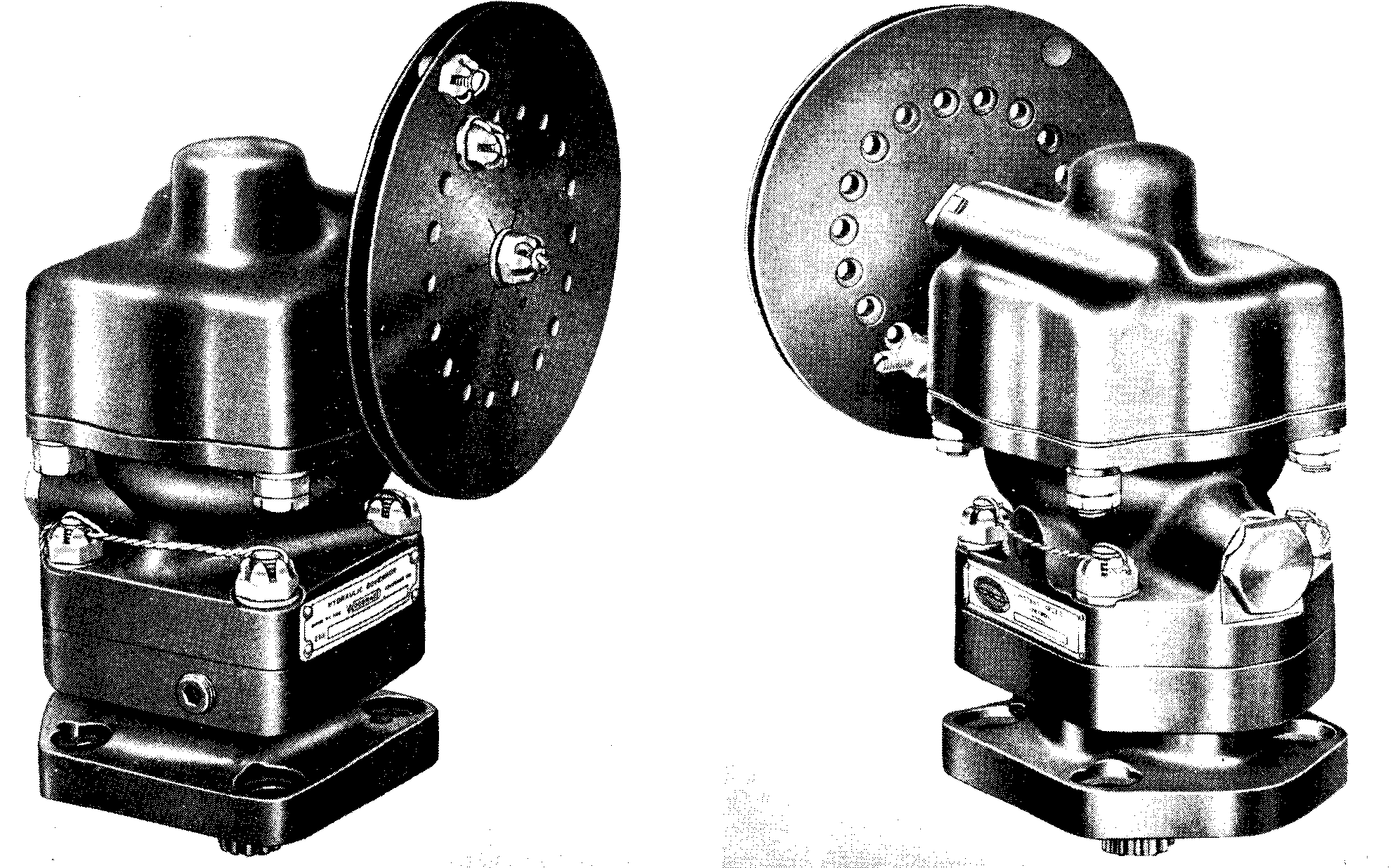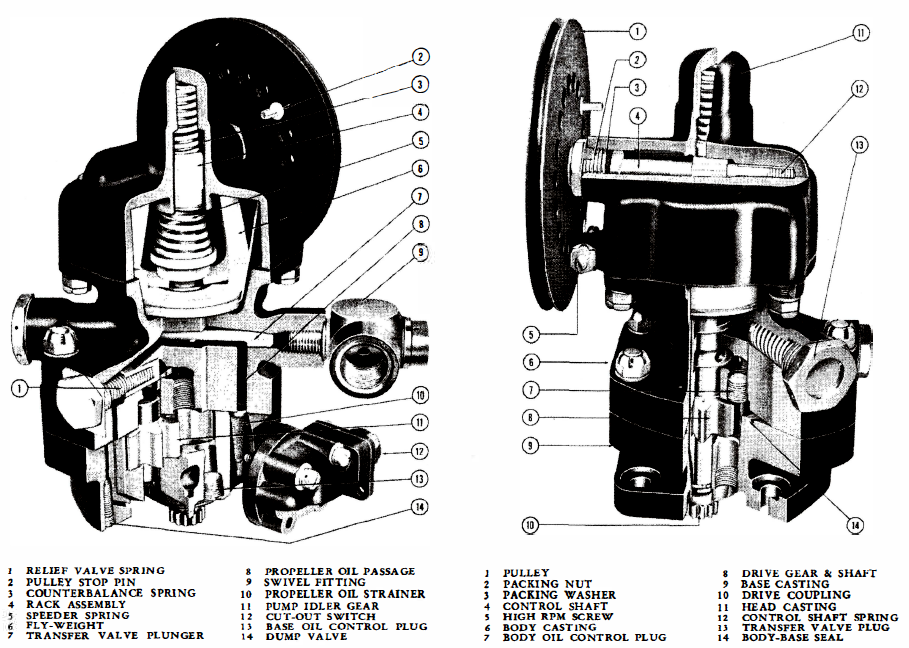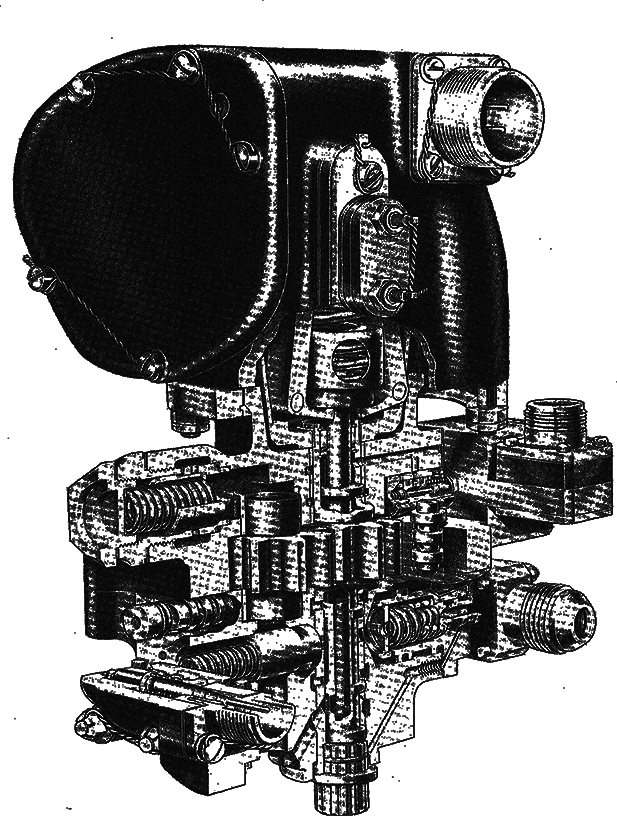In order to bet a better understanding of the hydromatic propeller governor, it is advantageous to first understand the operating principals of the Hydromatic type propeller. The Hydromatic propeller is an oil actuated constant speed and full feathering propeller which is regulated by means of the engine driven prop governor. The propeller pitch change mechanism consists of a piston operating in a cylinder and connected to the propeller blades through cams and gears. The piston is move inboard and outboard by oil pressure, which decreases and increases the blade angle. In order to maintain constant engine speed at any RPM, the governor supplies and controls the flow of oil to and from the propeller.
Single-acting hydromatic prop come in three different types: single capacity, double capacity and accumulator types. The basic operation is as follows: if the engine speed drops below the speed for which the prop governor is set, the rotational speed of the fly-weights decreases and the speeder spring moves the pilot valve downward allowing oil to drain from the propeller allowing the blade angle to decrease causing the engine to return to the on-speed setting. If the engine speed rises above the speed for which the prop governor is set, the rotational speed of the fly-weights increases and the speeder spring moves the pilot valve upward permitting oil to flow from the governor pump to the propeller causing the blade angle to increase slowing the engine so that it returns to the on-speed setting. During on-speed operation, the pilot valve is is in a neutral position where oil neither drains or is supplied to the propeller. The RPM setting of the governor can be changed by varying the compression of the speeder spring through rotation of the control wheel.
Unlike the Counterweight type prop governor, the Hydromatic prop governor can include a pressure-operated transfer valve, which on feathering installations, allows high pressure oil from an auxiliary pump to shunt out or add to the governor output when the propeller is being feathered or unfeathered. Feathering of the propeller becomes useful in the event of an issue where the engine must be shutdown. Feathering causes the propeller blades to rotate along its longitudinal axis until the blades are flat, preventing the propeller from grabbing air as the aircraft is flying which would cause it to rotate and would cause the engine to rotate which could cause more damage to the engine.
Single Capacity
The single capacity prop governor is used on aircraft requiring an average rate of propeller pitch change, and with blade and propeller designs requiring reasonably low governing pressures.
Double Capacity
The double capacity prop governor is used on aircraft requiring a higher rate of propeller pitch change, and has higher governing pressures needed for pitch change of propellers with larger blade areas.
Accumulator
The accumulator governor is usually installed on highly maneuverable aircraft which require the accumulator feature. The accumulator is a separate storage tank, connected to the governor, which holds oil under pressure to compensate for the momentary loss of engine oil cause by brief periods of negative gravitational acceleration. You can learn more about accumulators here.



